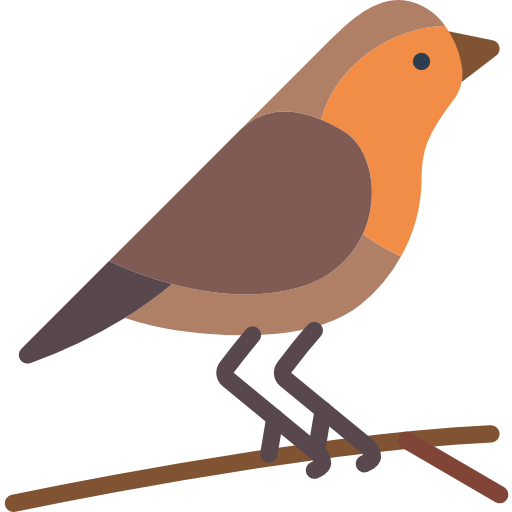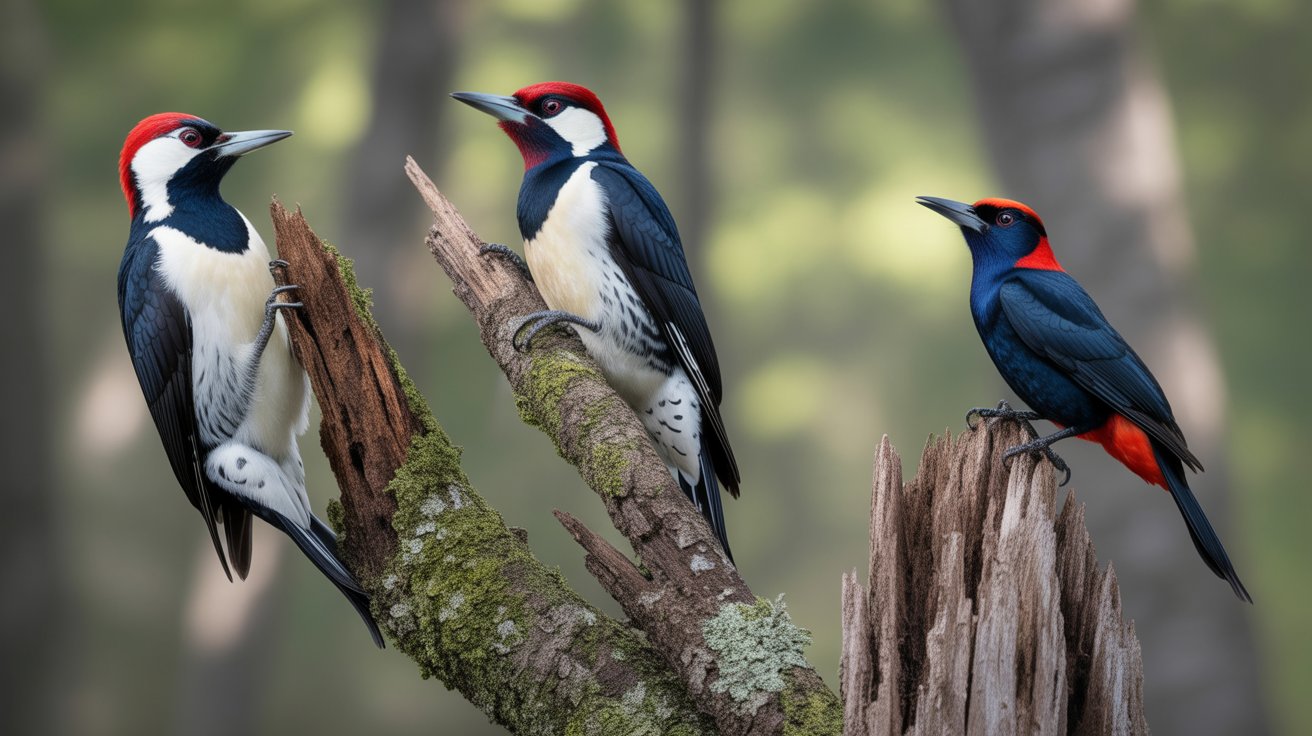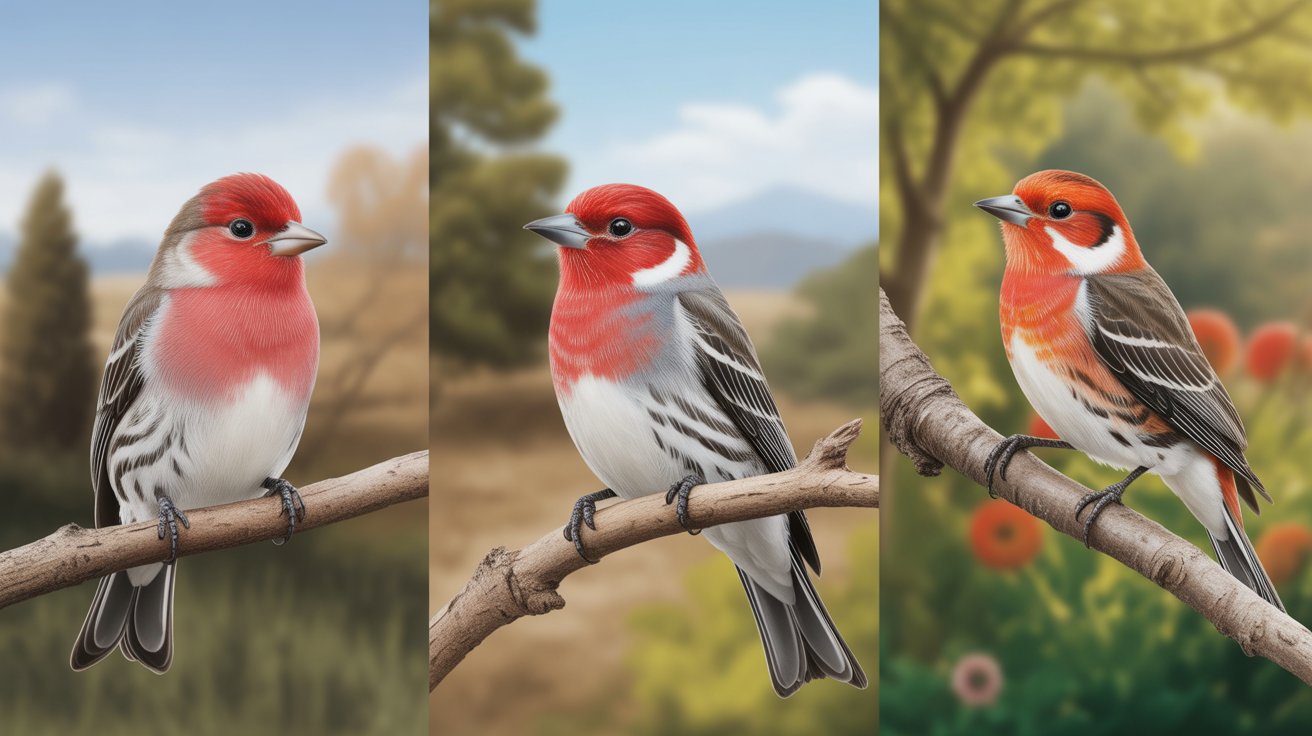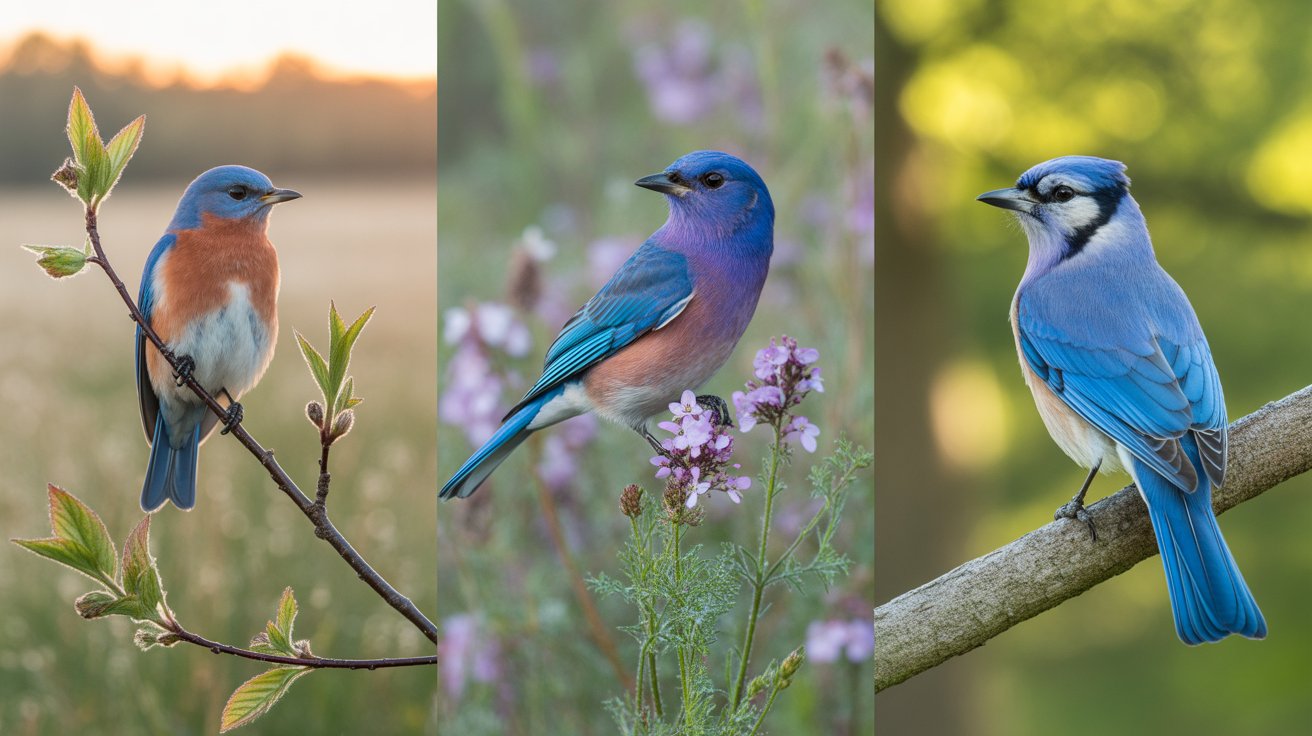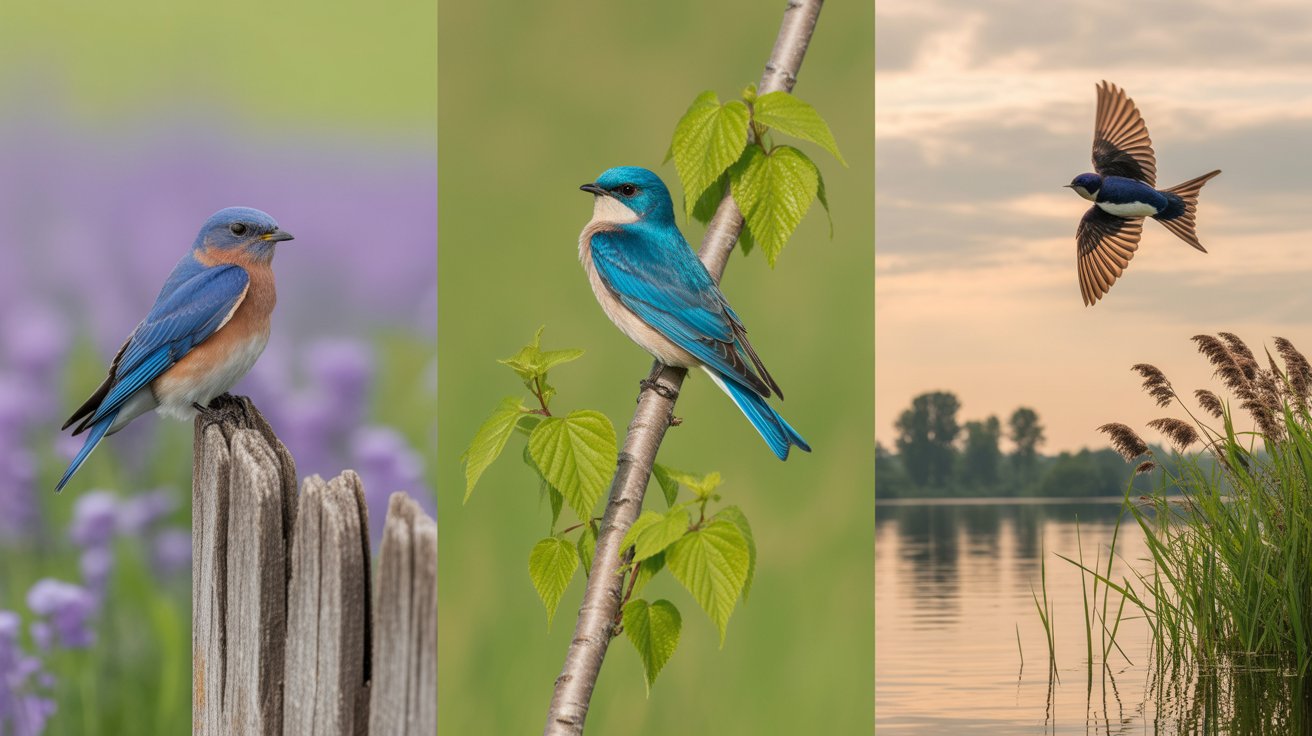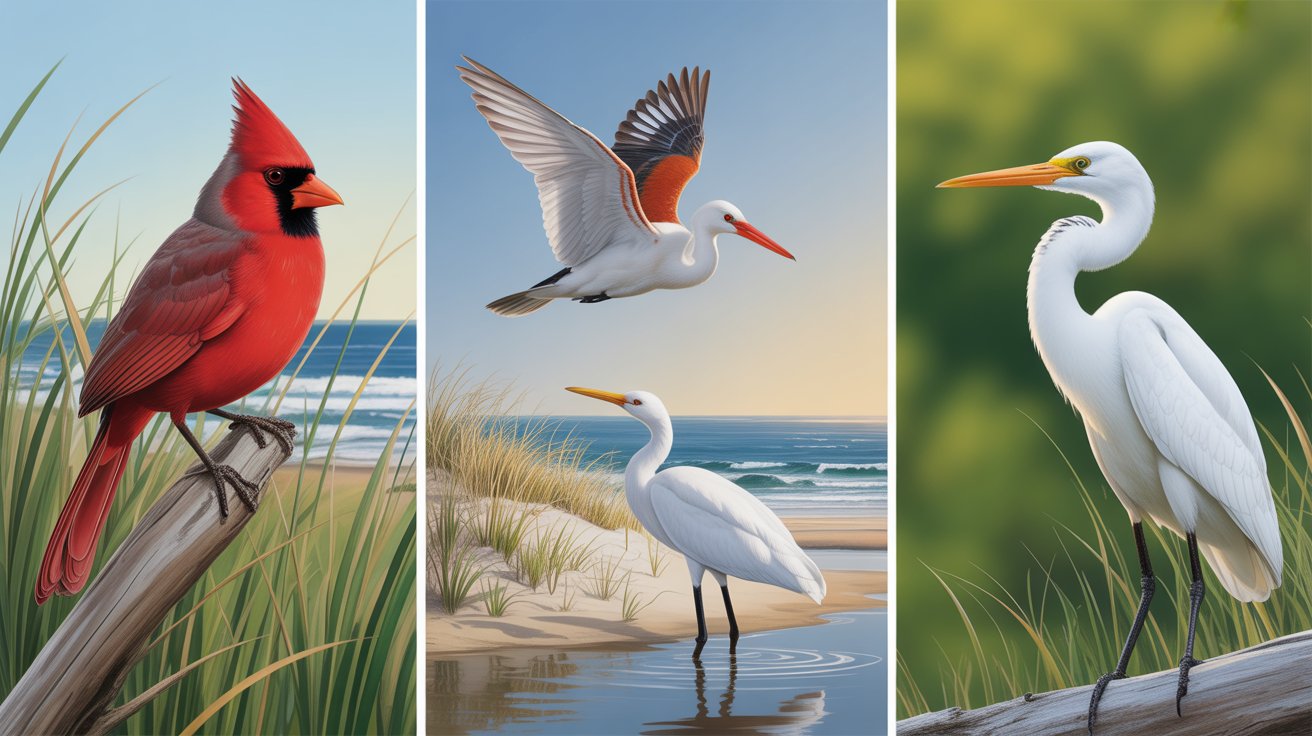If you’ve ever spotted a striking bird with a bold red head paired with sharp black and white plumage, you’re not alone. These vivid color combinations are rare in the bird world, making such species stand out easily against foliage or snow. Whether you’re a backyard birdwatcher or a curious nature enthusiast, learning to identify these eye-catching birds can be incredibly rewarding.
Black and white birds with redheads are not only visually fascinating—they also span a wide variety of habitats, behaviors, and even continents. From woodpeckers hammering away at tree bark to small finches hopping on your feeders, this coloration can be found in some of the most iconic and beloved birds in North America and beyond.
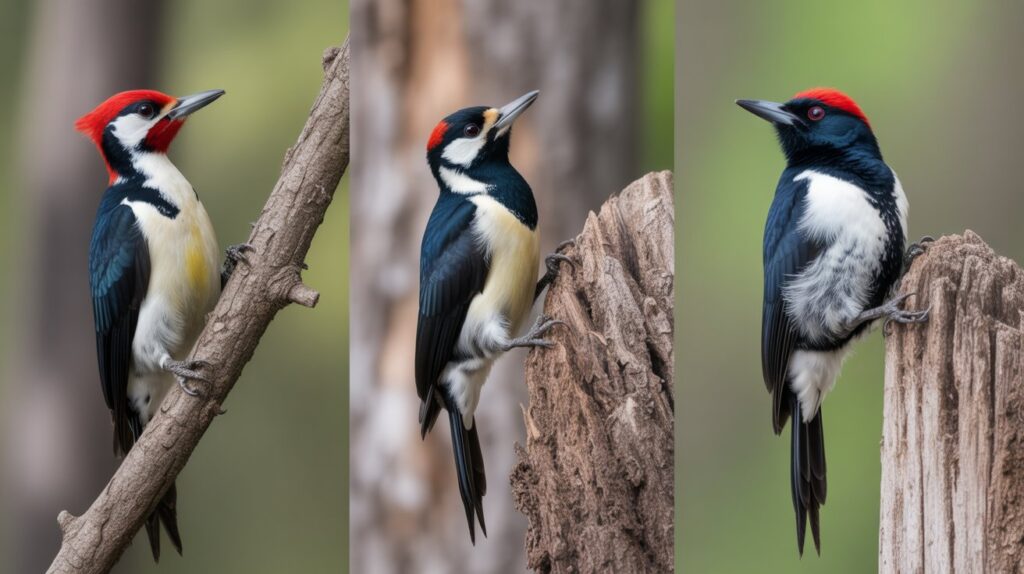
In this guide, you’ll discover 15+ amazing birds that showcase this striking color trio. Each section includes their scientific name, wingspan, length, and weight to help you better understand and identify them. So whether you’re exploring a forest trail or watching your backyard feeders, keep an eye out for these feathered beauties.
Let’s dive into the list of black and white birds with redheads that are sure to grab your attention!
Contents
- 1. Red-headed Woodpecker
- 2. Acorn Woodpecker
- 3. Crimson-collared Grosbeak
- 4. Rose-breasted Grosbeak
- 5. Red-capped Manakin
- 6. Pileated Woodpecker
- 7. Red-breasted Sapsucker
- 8. Red-cockaded Woodpecker
- 9. Red-fronted Barbet
- 10. Crimson-crested Woodpecker
- 11. Red-headed Finch
- 12. White-winged Widowbird (breeding male)
- 13. Red-faced Barbet
- 14. Red-headed Bunting (male)
- 15. Red-headed Barbet (male)
- 16. Red-headed Weaver (breeding male)
- FAQs
- Conclusion
1. Red-headed Woodpecker
With its crimson head, stark white underparts, and jet-black back, the Red-headed Woodpecker is a bold presence in any woodland or open field.
- Scientific Name: Melanerpes erythrocephalus
- Wingspan: 16.5 inches (42 cm)
- Length: 7.5–9.1 inches (19–23 cm)
- Weight: 2.0–3.4 oz (56–97 g)
You’ll often see these woodpeckers perched on fence posts or telephone poles, scanning for insects or small fruits. They are cavity nesters, often drilling into dead trees or even wooden buildings. Their entire head is covered in deep red, contrasting beautifully with their white belly and black back and wings.
2. Acorn Woodpecker
This comical-looking bird has a clown-like appearance with a bright red cap, white forehead, and black-and-white body.
- Scientific Name: Melanerpes formicivorus
- Wingspan: 13.8–16.9 inches (35–43 cm)
- Length: 7.5–9.1 inches (19–23 cm)
- Weight: 2.3–3.2 oz (65–91 g)
Acorn Woodpeckers are social birds, known for storing acorns in tree trunks, fence posts, and even utility poles. Their red crown sits atop a white face, while their body is clad in black and white feathers. You’ll usually find them in oak woodlands or mixed forests, especially in the western U.S.
3. Crimson-collared Grosbeak
A striking songbird with a velvet-black body and a fiery red head and chest.
- Scientific Name: Periporphyrus celaeno
- Wingspan: ~12 inches (30 cm)
- Length: 7.5–9.1 inches (19–23 cm)
- Weight: 1.8–2.1 oz (50–60 g)
Native to Mexico and sometimes seen in southern Texas, this grosbeak stands out with its deep red head that flows down into its breast. Its body is glossy black with white underwings visible in flight. Though shy, they occasionally visit backyard feeders with sunflower seeds.
4. Rose-breasted Grosbeak
Though not completely red-headed, the vivid rose-red triangle on the chest of males often appears to extend up to their black head.
- Scientific Name: Pheucticus ludovicianus
- Wingspan: 11–13 inches (28–33 cm)
- Length: 7–8 inches (18–21 cm)
- Weight: 1.2–1.7 oz (35–49 g)
This eastern North American songbird is beloved for its beautiful song and flashy plumage. Males are black and white with a splash of red that may look like a redhead from certain angles.
5. Red-capped Manakin
Famous for its moonwalk-like courtship dance, this tropical bird has a vivid red head atop a jet-black body.
- Scientific Name: Ceratopipra mentalis
- Wingspan: ~9.5 inches (24 cm)
- Length: 4–4.5 inches (10–11 cm)
- Weight: 0.45–0.6 oz (13–17 g)
Found in Central American rainforests, the Red-capped Manakin’s dance is as iconic as its appearance. Their white thighs and contrasting red head make them easy to identify if you’re lucky enough to spot one.
6. Pileated Woodpecker
The Pileated Woodpecker is one of the largest and most dramatic woodpeckers in North America, with a fiery red crest that extends from the forehead to the crown.
- Scientific Name: Dryocopus pileatus
- Wingspan: 26–30 inches (66–75 cm)
- Length: 16–19 inches (40–49 cm)
- Weight: 8.8–14.1 oz (250–400 g)
Its mostly black body is broken up by white stripes on the face and wings, visible in flight. These birds are known for their deep, resonant drumming on hollow trees and large rectangular holes excavated in search of carpenter ants. You’ll often hear them before you see them. While their red head makes them easy to identify, their shy nature means you might need patience and a bit of luck to spot one.
7. Red-breasted Sapsucker
This vibrant sapsucker is easily identified by its glowing red head and chest, offset by black wings with white barring.
- Scientific Name: Sphyrapicus ruber
- Wingspan: 14.6–16 inches (37–41 cm)
- Length: 7.9–8.7 inches (20–22 cm)
- Weight: 1.5–1.9 oz (43–55 g)
Common along the western coast of North America, this bird drills neat rows of holes into trees to feed on sap and insects. Males and females look alike, with vivid red coloring that bleeds into the breast, while their back is mostly black with bold white markings.
8. Red-cockaded Woodpecker
This endangered species is a bit more subtle, with a small red patch (or “cockade”) near the male’s cheek, accompanied by a black-and-white barred back.
- Scientific Name: Dryobates borealis
- Wingspan: 14 inches (36 cm)
- Length: 7.1–9.1 inches (18–23 cm)
- Weight: 1.5–1.8 oz (42–52 g)
These woodpeckers live in mature pine forests in the southeastern U.S. The red mark is often hard to see, but the bird’s distinctive barred pattern and preference for pine trees help in identification. They nest in living pines—unusual among woodpeckers—and live in cooperative family groups.
9. Red-fronted Barbet
Native to sub-Saharan Africa, this barbet is stocky with black-and-white plumage and a red crown that gives it its name.
- Scientific Name: Tricholaema diademata
- Wingspan: ~9 inches (23 cm)
- Length: 6.3–7.5 inches (16–19 cm)
- Weight: 1.4–1.8 oz (40–52 g)
These birds are often seen perching on exposed branches and calling in short, repetitive notes. Their red forehead contrasts with a largely black and white body and speckled facial patterns. Despite their exotic location, they have a similar appeal to woodpeckers in their posture and diet.
10. Crimson-crested Woodpecker
A South American standout, this large woodpecker sports an all-red head atop a bold black-and-white body.
- Scientific Name: Campephilus melanoleucos
- Wingspan: ~20 inches (51 cm)
- Length: 13–14 inches (33–36 cm)
- Weight: 9.0–11 oz (255–312 g)
Its red crest is tall and dramatic, reminiscent of the Pileated Woodpecker. Found in tropical forests, it has striking white stripes along its neck and upper back. Their powerful bill and large size make them unmistakable.
11. Red-headed Finch
This African songbird features a red head on a finely barred black-and-white body, giving it a stylish, scaled look.
- Scientific Name: Amadina erythrocephala
- Wingspan: ~9 inches (23 cm)
- Length: 5.1–5.9 inches (13–15 cm)
- Weight: 0.7–0.8 oz (20–24 g)
Males flaunt the red head more boldly, while females appear more subdued. These finches are social and often found in flocks around acacia woodlands or grasslands. Their coloration makes them a favorite in aviculture as well.
12. White-winged Widowbird (breeding male)
In breeding season, males of this African species develop a glowing red crown, contrasting with a black body and white wing patches.
- Scientific Name: Euplectes albonotatus
- Wingspan: ~10 inches (25 cm)
- Length: 5.5–7.5 inches (14–19 cm)
- Weight: 0.7–1.0 oz (20–28 g)
This transformation is seasonal and linked to mating displays. The black and white wings are sharply outlined when flying, making the red head even more dramatic. Outside the breeding season, males lose the red and appear more dull brown like females.
13. Red-faced Barbet
A colorful African barbet with a black-and-white body and deep crimson cheeks and crown.
- Scientific Name: Lybius rubrifacies
- Wingspan: ~9 inches (23 cm)
- Length: 6.3–7.1 inches (16–18 cm)
- Weight: 1.3–1.6 oz (37–45 g)
The red “face” on this barbet almost covers the entire head, giving the illusion of a redhead. These birds are often seen perched quietly or foraging for fruits and insects in woodlands and savannas.
14. Red-headed Bunting (male)
During breeding season, males sport a red-orange head with black-and-white markings on the wings and tail.
- Scientific Name: Emberiza bruniceps
- Wingspan: ~9 inches (23 cm)
- Length: 5.5–6.3 inches (14–16 cm)
- Weight: 0.7–1.1 oz (20–32 g)
Found in Central Asia and occasionally migrating to northern India and the Middle East, this bunting is a flashy and energetic singer. The contrast between its bright head and more monochrome body gives it a bold look, especially in full sun.
15. Red-headed Barbet (male)
This colorful tropical bird has a brilliant red head, olive-green wings, and a white belly with some black markings on the wings.
- Scientific Name: Eubucco bourcierii
- Wingspan: ~9.8 inches (25 cm)
- Length: 6–7 inches (15–18 cm)
- Weight: 1.0–1.3 oz (28–38 g)
Found in Central and South American cloud forests, this barbet’s vivid colors make it a favorite among birdwatchers. The red head is sharply separated from the rest of its plumage, helping it stand out against lush forest backdrops.
16. Red-headed Weaver (breeding male)
A striking African bird with a bright crimson head, black back, and white underparts.
- Scientific Name: Anaplectes rubriceps
- Wingspan: ~10 inches (25 cm)
- Length: 5.9–6.7 inches (15–17 cm)
- Weight: 0.8–1.0 oz (23–28 g)
These birds are exceptional nest builders, weaving intricate hanging nests from grasses. During breeding season, males flash their red crowns to attract mates, while their bold black wings and white belly provide visual contrast.
FAQs
1. Why do some birds have red heads?
Red coloration often plays a role in attracting mates or warding off rivals. It’s also genetically influenced and sometimes diet-based, especially in species like woodpeckers and cardinals.
2. Are red-headed birds rare?
Not exactly rare, but they are certainly more noticeable due to their bright coloration. Some, like the Red-headed Woodpecker, are common in parts of North America.
3. What attracts red-headed birds to backyards?
Many love feeders stocked with sunflower seeds, suet, or fruits. Providing dead trees or wood piles also helps attract woodpeckers.
4. Are these birds aggressive?
Most aren’t, though some woodpeckers and jays can be territorial during breeding season. Generally, they coexist well with other birds.
5. Do males and females look the same in these species?
It depends on the species. In many red-headed birds, males tend to have brighter coloration than females, especially during breeding season.
Conclusion
Now that you’ve explored some of the most eye-catching black and white birds with redheads, you’re better equipped to identify them on your next birding adventure. These birds aren’t just pretty to look at—they play essential roles in ecosystems by controlling insects, spreading seeds, and entertaining birdwatchers like you.
From woodlands to backyard feeders, each bird brings its own personality and flair. Whether it’s the rhythmic drumming of a Red-headed Woodpecker or the moonwalking antics of a Red-capped Manakin, there’s always something unique to appreciate.
So next time you spot a flash of red atop a black-and-white body, grab your binoculars—you may be lucky enough to spot one of these feathered showstoppers. Happy birdwatching!
